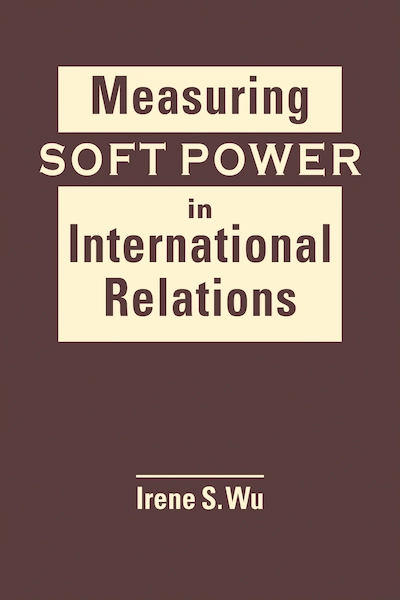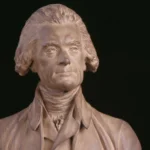When the Berlin Wall fell in 1989 and the Cold War began to end, people walked westward, not eastward, pulled by the magnetism of the West’s soft power.
- The Intuition Behind the Soft Power Rubric
- Evidence of Soft Power at Work
- Trust Communities, Social Capital, Collective Action
- Global Soft Power Rankings: Validating the Soft Power Rubric
- Countries with More Soft Power Than Military or Economic Power
- Key Points for the Future
- Explore Books Written by Our Contributors
My new book Measuring Soft Power in International Relations re-conceptualizes soft power from the perspective of the influenced, rather than the influencer.
The Soft Power Rubric measures soft power resources, the potential for a country to have a soft power relationship with another.
The result is the Soft Power Rubric, a method for measuring the magnetism of countries that connects domestic dynamics to a country’s international status.
The Intuition Behind the Soft Power Rubric
Suppose we think of soft power as produced not by governments, but instead by ordinary people expressing their interest in foreign countries. Suppose further that our country has soft power when foreigners think of us as “we” rather than as “they.” In effect, soft power relationships exist when foreigners include us as part of their community; we become friends of their nation.
Measuring soft power in international relations introduces the Soft Power Rubric, which brings together relevant, observable, and measurable activity that captures a country’s potential scope for soft power influence—the number of cross-border interactions its people have with foreign countries.
A bigger GDP does not guarantee the upper hand in a trade negotiation.
The Soft Power Rubric tracks the actions people take when they are interested in another country. Three elements are direct people-to-people interactions: emigrating, studying abroad, and traveling abroad.
The fourth element is a mediated interaction: watching foreign movies. Emigration reflects a person’s ultimate integration in a foreign society, permanently moving family and home to another country.
Studying abroad reflects a person’s serious interest and commitment to understanding another society by spending substantial financial resources and formative time in a foreign country. Visiting a foreign country reflects a short-term interest in a foreign society. Watching a movie expresses an interest or curiosity about another country.
For each of these series, international government institutions collect and publish quantitative data for many countries. Figure 1 shows that these indicators range from short-term attraction, such as buying a ticket to see a movie from another country, to long-term attraction, such as emigrating to a foreign country. Depending on the indicator, data for over 200 countries from around 1960–2020 are available from public sources for migration, international education, travel and movies.
| Short-term attraction | Watch a movie | Visit a country | Study abroad | Emigrate | Long-term attraction |
Over time, the change in the number of immigrants and other Rubric elements, is the change in soft power relationship between countries. This measure of soft power makes it possible to discuss the United States’ soft power relationship with Canada as distinct from its soft power relationship with China, or with countries in Europe.
While this parsimonious approach that looks only at the quantity of transnational social interactions does not capture the quality of the soft power relationship, any more than gross domestic product (GDP) can capture the quality of production, it does outline the outer bounds of potential soft power.

The Soft Power Rubric measures soft power resources, the potential for a country to have a soft power relationship with another. GDP, a measure of economic power resources, sums the financial value of goods and services produced by an economy.
Social science work on trust, social capital, and collective action are directly relevant to soft power.
The numbers of military bases, aircraft carriers, or personnel are measures of military power resources. More resources likely mean more success, but there is no guarantee. A bigger GDP does not guarantee the upper hand in a trade negotiation. More military bases do not ensure victory in war. However, more resources make success more likely, and the depletion of resources heightens the risk of failure.
Similarly, the Rubric reveals the volume and intensity of people-to-people interactions that form the basis of many individuals’ views of foreign countries and the foundation of a country’s soft power resources. More soft power resources no more predict greater political cooperation than more military resources predict victory in war. However, it is reasonable to expect that the presence of major soft power resources itself alters perception and behavior.
This approach makes it possible to measure soft power across countries and across time. It connects the lived experience of individuals to the collective understandings of communities, which in turn informs the behavior of states. This makes culture and values as tangible as money and firepower in the study of international relations.
Evidence of Soft Power at Work
Thirty years after Joseph Nye defined soft power, we know that soft power affects the success of foreign policy. Public opinion in foreign countries can influence whether they will cooperate at the United Nations or join in an allied military action.

We know that nations with stronger democracy, economic prosperity and thriving cultural institutions have more soft power and benefit by attracting foreign direct investment, foreign students, and international cooperation.
Trust is not simply an act of faith, but a choice based on experience and self-interest.
We know that of the many channels for developing soft power, international education is the most powerful; students who study abroad in democracies often bring those values home. We also know that people-to-people interaction – the more direct, the more effective – have more influence than foreigners interacting with corporate brands.
For example, people who have interacted with Americans are more likely to have a positive image of the US, than those who have bought American products. Instead, soft power standing more likely precedes trade; business people consider whether they approve of the leadership of a country, then they trade with that country. Finally, we know to be aware that soft power can be influential in either a constructive or destructive manner – it is a political power like any other and can be used for any purpose.
Trust Communities, Social Capital, Collective Action
Soft power is not just about which countries people like, but – in a crisis – which countries people stand in solidarity with, and possibly sacrifice for. Social science work on trust, social capital, and collective action are directly relevant to soft power.
Trust is not simply an act of faith, but a choice based on experience and self-interest. Elinor Ostrom showed that among strangers, trust can be built over time through repeated reciprocal action. Trust develops in this way in “tiny publics” or “minute associations,” small groups of people—like a book club or a bowling team—who work together, hold common values, share a past, and look forward to a future.
The Soft Power Rubric’s quantitative data points us to where there is likely to be a soft power relationship.
Big social forces get started in small-scale places. Trust is the basis for building social capital, a willingness to cooperate within a community.
Communities with social capital may be willing to take collective action. In other words, they may be willing to work together toward a common goal, even at the sacrifice of some individual’s interests.
Communities can be thought of as observable networks of communication channels. For example, in the mid-eighteenth century, there were more pieces of mail among the various colonies in the United States and the United Kingdom than there were between the colonies themselves.

Measuring soft power introduces the Soft Power Rubric, which quantifies a country’s potential influence through cross-border interactions.
However, by the early nineteenth century, the volume among the US states grew to be greater than the mail between it and the United Kingdom. Postal delivery volumes indicate the geographic outlines of communities. Similarly, patterns of migration, education, travel, and movie-watching provide us outlines of potential communities.
Media also bring people together. The regular act of reading a newspaper connects people together—cultivating a common language, symbols, and memories—creating a community of the mind, “imagined community” if you will, rather than a community defined by physical boundaries. In my own work Forging Trust Communities, I show that beyond newspapers, more recent technologies of phones and Internet also create the potential for new communities. This potential is converted into actual communities when the people actually interact, reciprocate, and build trust.
Just because a postal system is created does not mean that colonies become more integrated; the evidence of that integration is that people use the system to send mail. Just because a newspaper is printed does not automatically create an “imagined community”; what creates the imagined community is that people choose to read it regularly.
Finally, just because there is a social media platform available does not mean there is a “trust community”; when people form ties with each other through regular interaction, that is what forges a trust community. The Soft Power Rubric’s quantitative data points us to where there is likely to be a soft power relationship, only further investigation into the specific dynamics, context, and history can illuminate the quality of the relationship.
Global Soft Power Rankings: Validating the Soft Power Rubric
Using the Soft Power Rubric, Table 1 shows the top five soft power countries from 1990 to 2020. Table 1 is calculated by taking a country’s rank in terms of number of immigrants, foreign students, and visitors, summing those ranks, and then ranking the sums. Movies are not included in this application of the Rubric because a much smaller set of countries report movie data compared to the other three series. Data and further details are in the book.
| Rank | 1990 | Rank | 2000 | Rank | 2010 | Rank | 2020 | |||
| 1 | US | 1 | US | 1 | US | 1 | US | |||
| 2 | France | 2 | France | 2 | France | 2 | France | |||
| 3 | Canada | 3 | Germany | 3 | UK | 3/4 | Germany | |||
| 4 | Russia | 4 | Russia | 4 | Germany | 3/4 | UK | |||
| 5 | UK | 5 | UK | 5 | Russia | 5 | Spain | |||
In public policy discussions, one of the most widely referenced soft power rankings is the Soft Power 30, often presented at the World Economic Forum in Davos, Switzerland, based on a mix of objective data and opinion survey.
The 2020 Soft Power Rubric and the 2019 Soft Power 30 rankings look similar, with the same four countries in varying rankings within the top five: the United States, France, Germany, and the United Kingdom. Therefore, despite its vastly different methodology, the Soft Power Rubric travels in the same direction as other soft power rankings, but with a transparent model, public data, and historical time series.
A major implication of this work is that the more open societies are to foreigners, the more likely they will have soft power influence.
While the Soft Power Rubric can be used to create global rankings, that is not its primary purpose. The Soft Power Rubric is less an answer and more a pathway to further questions. For example, compared to other approaches to measuring soft power, the Rubric enables a longer historical lens.
Also, the Rubric allows for direct comparison among countries. Finally, the Rubric can be used to analyze countries that are regional leaders, not just the global ones. Measuring soft power in international relations includes several case studies on movies and popular culture, international education, Russia and China, India, Southeast Asia.
Countries with More Soft Power Than Military or Economic Power
There are countries with more soft power than their economic or military significance and the Soft Power Rubric can help identify them. For example, South Africa became an international model for delivering social justice after a long history of racist exploitation. There is a cluster of studies of South Africa’s soft power in the Africa region, especially as it transformed from international pariah to a moral authority on peace and reconciliation after apartheid ended. It is now the only African country in the G20.
Building on its moral standing, South Africa’s relaxed immigration policies, and hosting of international events augments its soft power. Table 2 shows data for South Africa and several other countries in terms of economic size, armed forces size, and Soft Power Rubric ranking.
| Country | Soft Power Rubric 2020—Rank | Armed forces personnel, total 2019—Rank | GDP (current US$) 2020—Rank |
| Spain | 5 | 33 | 14 |
| Canada | 7 | 8 | 12 |
| Australia | 12 | 66 | 13 |
| South Africa | 23 | 56 | 39 |
Spain, Canada, and Australia are also countries with more soft power than military or economic influence. Spain is among the top five countries for foreign visitors; Canada is among the top ten countries for immigrants and foreign students. Australia is second only to the US in hosting international students. Their openness to foreigners is the key to their soft power resources.
Key Points for the Future
Military, economic, and natural resources alone do not fully explain a nation’s influence abroad. Soft power – how attractive foreigners find its society and values – also plays an important role. However, if policymakers cannot measure soft power, how do they know they fostering or undermining it?
Reconceiving soft power as when foreigners think of us as “we” rather than as “they,” makes it possible to connect quantitatively a country’s domestic appeal to its international status. If we accept that soft power resources are created through the people’s interaction with foreigners, a major implication of this work is that the more open societies are to foreigners, the more likely they will have soft power influence.
Explore Books Written by Our Contributors
For policymakers, the four elements to the Soft Power Rubric highlight arenas that are not usually the main focus of foreign policy. While international education has long been an important tool for building alliances, travel is usually treated as a commercial activity. Travel is a gateway to making a bigger commitment like enrolling in a foreign university.
Similarly migration more frequently figures as a problem—a brain drain for some countries or a crisis for countries on the receiving end of many migrants. From the Soft Power Rubric perspective, migration is an opportunity to build transnational social relationships that have long-term consequences for all countries involved. Finally, movies do figure highly in soft power discussions, but mostly in how they are made. Instead, we should pay more attention to who views them. Data from social media and on-demand video platforms should make this an interesting area to explore in the future.
The Soft Power Rubric’s new approach, combining quantitative measures and qualitative investigation, reinvigorates our inquiries to unpack the influence of culture and values and the importance of relationships, not just force, in the world. It also underscores how we are all involved in creating soft power relationships. How we welcome foreign visitors, students, and immigrants, and the decisions we make whether to go abroad, where to go, and for how long, all have implications for soft power relationships and the standing of the communities in which we belong.









